| [1] 王勇平,尹自飞,蒋垚,等.镁合金材料在医学临床领域的应用[J].中华临床医师杂志,2011,5(24):7323-7326.
[2] Witte F.The history of biodegradable magnesium implants: A review.Acta Biomater.2010;6(5): 1680-1692.
[3] Staiger MP,Pietak AM,Huadmai J,et al.Magnesium and its alloys as orthopedic biomaterials: A review.Biomaterials. 2006;27(9): 1728-1734.
[4] Xin Y,Hu T,Chu PK.In vitro studies of biomedical magnesium alloys in a simulated physiological environment: A review.Acta Biomater.2011;7: 1452-1459.
[5] Li Z,Gu X,Lou S,et al.The development of binary Mg-Ca alloys for use as biodegradable materials within bone. Biomaterials.2008;29(10): 1329-1344.
[6] 王勇平,蒋垚.基于SCI数据库收录文献分析镁合金植入物在骨科的应用[J].中国组织工程研究,2012,16(16):2971-2980.
[7] Gu X,Zheng Y,Cheng Y,et al.In vitro corrosion and biocompatibility of binary magnesium alloys.Biomater.2009; 30(4): 484-498.
[8] Xu L,Yu G,Zhang E,et al.In vivo corrosion behavior of Mg–Mn–Zn alloy for bone implant application.J Biomed Mater Res A.2007;83(3): 703-711.
[9] Zberg B,Uggowitzer PJ,Löffler JF.MgZnCa glasses without clinically observable hydrogen evolution for biodegradable implants. Nat Mater.2009; 8(11): 887-891.
[10] Witte F,Ulrich H,Rudert M,et al.Biodegradable magnesium scaffolds: part I: appropriate inflammatory response.J Biomed Mater Res A.2007;81(3): 748-756.
[11] Witte F,Ulrich H,Palm C,et al.Biodegradable magnesium scaffolds: part Ⅱ: peri-implant bone remodeling.J Biomed Mater Res A.2007;81(3): 757-765.
[12] Witte F,Feyerabend F,Maier P,et al.Biodegradable magnesium-hydroxyapatite metal matrix composites. Biomaterials.2007;28(13): 2163-2174.
[13] Gu X,Zheng Y,Zhong S,et al.Corrosion of, and cellular responses to Mg–Zn–Ca bulk metallic glasses. Biomaterials. 2010;31(6): 1093-1103.
[14] Xu L,Pan F,Yu G,et al.In vitro and in vivo evaluation of the surface bioactivity of a calcium phosphate coated magnesium alloy.Biomaterials. 2009;30(8): 1512-1523.
[15] Yang J,Cui F,Lee IS.Surface modifications of magnesium alloys for biomedical applications.Ann Biomed Eng.2011;39: 1857-1871.
[16] Zhang X,Yuan G,Niu J,et al.Microstructure, mechanical properties, biocorrosion behavior, and cytotoxicity of as-extruded Mg-Nd-Zn-Zr alloy with different extrusion ratios.J Mech Behav Biomed Mater.2012;9: 153-162.
[17] Zhang X,Yuan G,Mao L,et al. Effects of extrusion and heat treatment on the mechanical properties and biocorrosion behaviors of a Mg-Nd-Zn-Zr alloy.J Mech Behav Biomed Mater.2012;7: 77-86.
[18] Wang Y,Ouyang Y,Peng X,et al.Effects of degradable Mg-Nd-Zn-Zr alloy on osteoblastic cell function.Int J Immunopathol Pharmacol.2012;25(3): 597-606.
[19] GB/T 16886.15-2003.医疗器械生物学评价.第15部分:金属与合金降解产物的定性与定量.
[20] ASTM-G31-72: standard practice for laboratory immersion corrosion testing of metals, Annual book of ASTM standards. Philadelphia, USA: American Society for Testing and Materials. 2004.
[21] 中华人民共和国科学技术部.关于善待实验动物的指导性意见. 2006-09-30.
[22] Kohn DH.Metals in medical applications.Curr Opin Solid State Mater Sci.1998;3(3): 309-316.
[23] Hanawa T.Evaluation techniques of metallic biomaterials in vitro.Sci Technol Adv Mat.2002;3(4): 289-295.
[24] Hanawa T. In vivo metallic biomaterials and surface modification. Mat Sci Eng A.1999;267(2): 260-266.
[25] Heublein B,Rohde R,Kaese V,et al.Biocorrosion of magnesium alloys: a new principle in cardiovascular implant technology.Heart.2003;89(6): 651-656.
[26] Lambotte A.L'utilisation du Magnesium Comme Materiel Perdu Dans L’osteosynthese.Bull Mem Soc Nat Chir.1932; 28(3): 1325-1334.
[27] McBride ED. Absorbable metal in bone surgery.J Am Med Assoc.1938;111(27): 2464-2467.
[28] Williams D.New interests in magnesium.Med Device Technol. 2006;17(3): 9-10.
[29] Song GL.Control of biodegradation of biocompatable magnesium alloys. Corros Sci.2007;49(4): 1696-1701.
[30] Pietak A,Mahoney P,Dias GJ,et al.Bone-like matrix formation on magnesium and magnesium alloys.J Mater Sci Mater Med. 2008;19(1): 407-415.
[31] Soni MG,White SM,Flamm WG,et al.Safety evaluation of dietary aluminum. Regul Toxicol Pharmacol.2001;33(1): 66-79.
[32] Flaten TP.Aluminum as a risk factor in Alzheimer’s disease, with emphasis on drinking water.Brain Res Bull.2001;55(2): 187-196.
[33] Ku CH,Pioletti DP,Browne M,et al.Effect of different Ti-6Al-4V surface treatments on osteoblasts behaviour.Biomaterials. 2002;23(6): 1447-1454.
[34] Witte F,Hort N,Vogt C,et al.Degradable biomaterials based on magnesium corrosion.Curr Opin in Solid State Mater Sci.2008; 12(5): 63-72.
[35] Witte F,Fischer J,Nellesen J,et al.In vitro and in vivo corrosion measurements of magnesium alloys.Biomaterials.2006;27(7): 1013-1018.
[36] Huan ZG,Lee?ang MA,Zhou J,et al.In vitro degradation behavior and cytocompatibility of Mg–Zn–Zr alloys.J Mater Sci Mate Med.2010;21(9): 2623-2635.
[37] Xu L,Zhang E,Yin D,et al.In vitro corrosion behaviour of Mg alloys in a phosphate buffered solution for bone implant application. J Mater Sci Mater Med. 2008;19(3): 1017-1025.
[38] Babkin VM.Effect of zirconium on the grain size of magnesium containing 4.5% Zn.Met Sci Heat Treat.2004;5: 543-544.
[39] Song G,John D.The effect of zirconium grain refinement on the corrosion behavior of magnesium-rare earth alloy MEZ.J Light Met.2002;1: 1-16. |
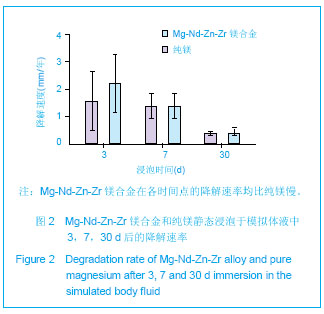
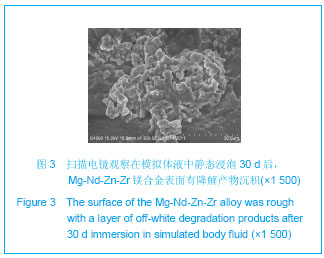
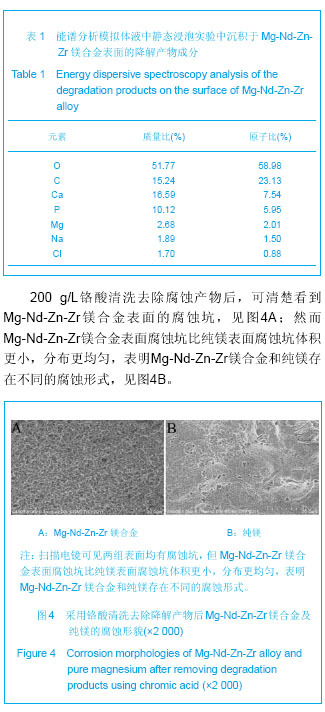
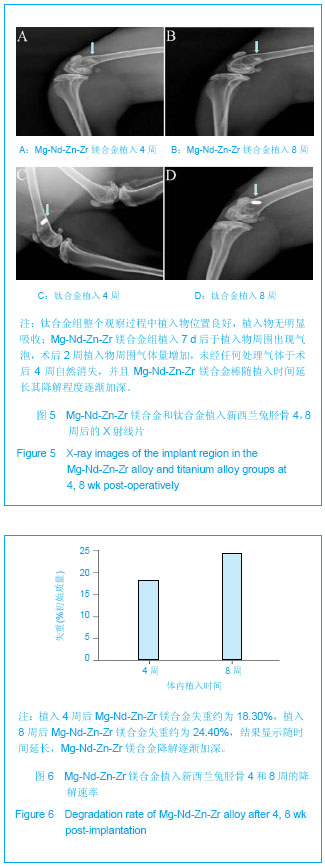
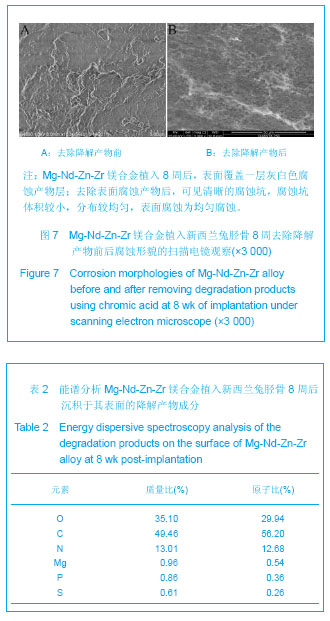
.jpg)
.jpg)